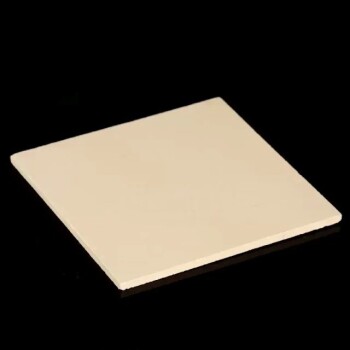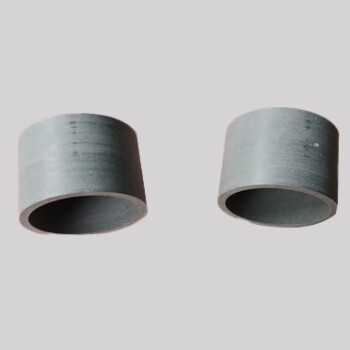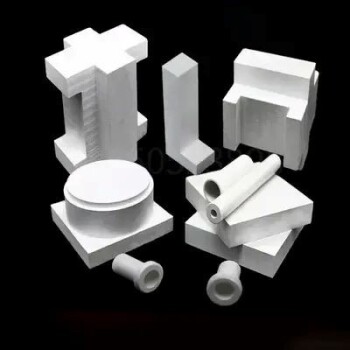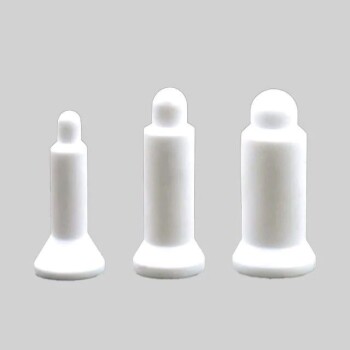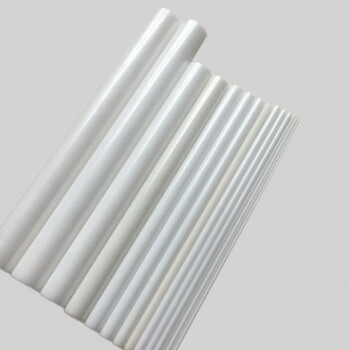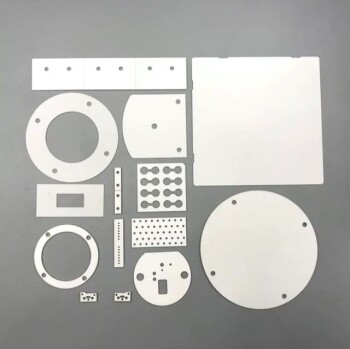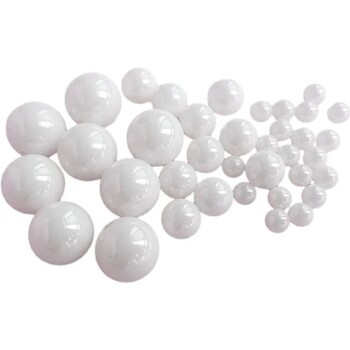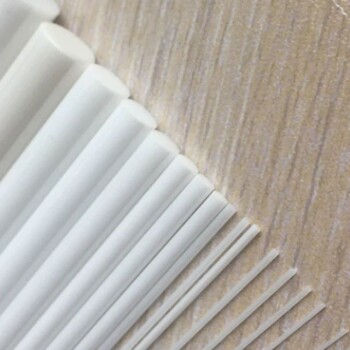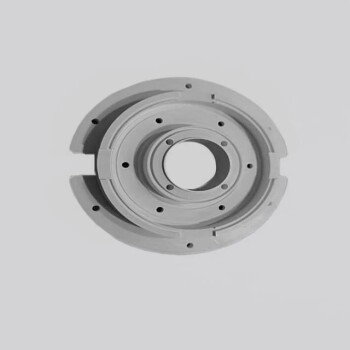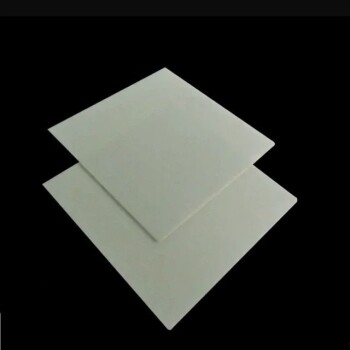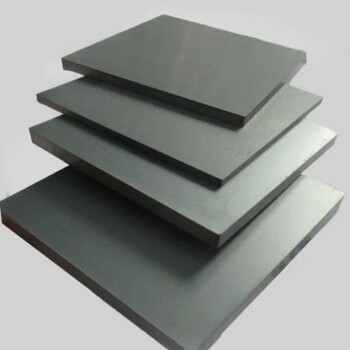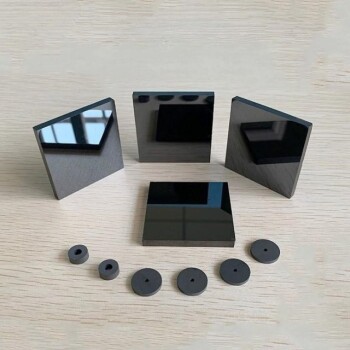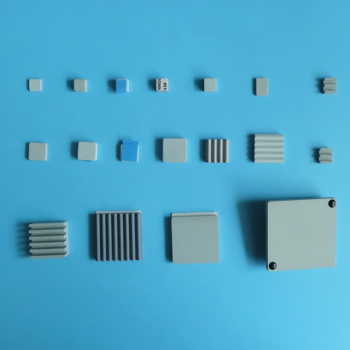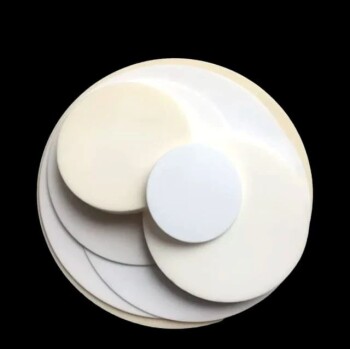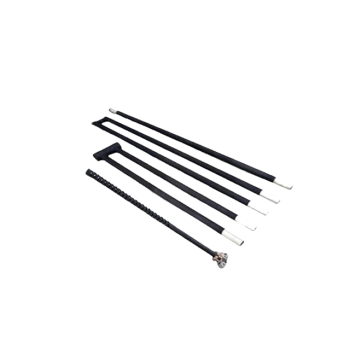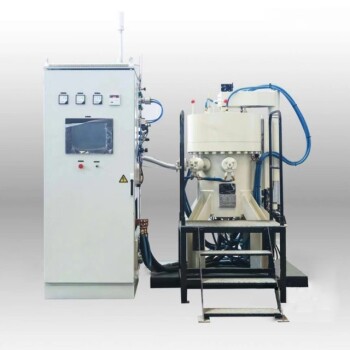반도체용 정밀 세라믹 소개
반도체 장비에서 세라믹의 장점
세라믹은 뛰어난 기계적 및 열적 특성으로 인해 반도체 장비의 수많은 부품에 선택되는 재료로 각광받고 있습니다. 높은 경도 와 높은 탄성 계수 덕분에 세라믹은 반도체 제조에서 발생하는 극한의 조건과 기계적 스트레스를 견딜 수 있습니다. 따라서 장비가 안정적으로 작동하고 마모를 최소화하여 유지보수 비용과 가동 중단 시간을 줄일 수 있습니다.
또한 높은 내마모성 세라믹의 높은 내마모성은 웨이퍼 연마기 및 에칭 장비와 같이 마찰과 마모가 빈번한 환경에서 매우 중요합니다. 이러한 특성은 핵심 부품의 수명을 연장하여 반도체 제조 공정의 전반적인 효율성과 수명을 연장하는 데 기여합니다.
세라믹은 또한 높은 절연성 및 내식성 도 뛰어나 반도체 장비의 무결성과 성능을 유지하는 데 필수적입니다. 세라믹은 낮은 열팽창 계수는 세라믹의 정밀 응용 분야에 대한 적합성을 더욱 향상시켜 다양한 열 조건에서도 치수 안정성이 유지되도록 보장합니다.
요약하면, 세라믹은 높은 경도, 높은 탄성계수, 높은 내마모성, 높은 절연성, 내식성, 낮은 팽창성의 조합으로 반도체 장비의 다양한 부품에 필수적으로 사용되며 까다로운 반도체 제조 환경에서도 최적의 성능과 신뢰성을 보장합니다.
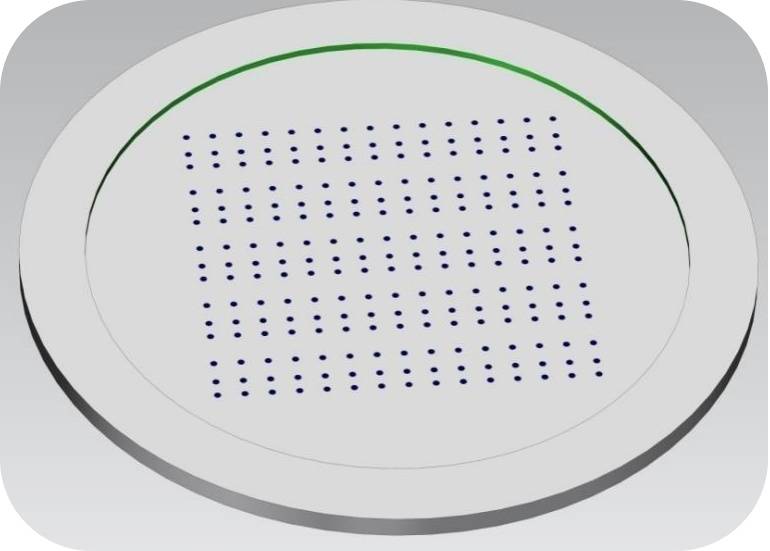
반도체 장비에서 정밀 세라믹의 가치
정밀 세라믹은 반도체 장비 전체 가치의 약 16%를 차지할 정도로 반도체 산업에서 중추적인 역할을 담당하고 있습니다. 이 첨단 소재는 반도체 제조의 다양한 핵심 공정에 필수적으로 사용되며 높은 정밀도와 신뢰성을 보장합니다.
정밀 세라믹은 반도체 장치에 필요한 매끄러운 표면을 구현하기 위해 경도와 내마모성이 중요한 실리콘 웨이퍼 폴리 셔에 광범위하게 활용됩니다. In 진공 열처리 장비에서 이 세라믹은 뛰어난 열 안정성을 제공하여 일관되고 제어된 가열 공정을 가능하게 합니다.
포토리소그래피에서는 포토레지스트 코팅 웨이퍼를 다루고 조작하는 복잡한 부품에 정밀 세라믹이 사용되어 반도체 제조에 필요한 고해상도 패턴을 보장합니다. 증착 장비는 세라믹의 낮은 열팽창과 높은 절연 특성의 이점을 활용하며, 이는 필름 증착에 필요한 정밀한 조건을 유지하는 데 필수적입니다.
식각 장비는 가혹한 화학 환경과 고온을 견디는 부품용 정밀 세라믹을 사용하여 재료 층을 정밀하게 제거할 수 있습니다. 고에너지 입자 빔을 성능 저하 없이 처리할 수 있는 소재가 필요한 이온 주입 기계 역시 뛰어난 내구성과 방사선 손상에 대한 내성을 갖춘 정밀 세라믹을 사용합니다.
| 적용 분야 | 세라믹 부품 사용 분야 |
|---|---|
| 실리콘 웨이퍼 폴리 셔 | 매끄러운 웨이퍼 표면을 위한 경도 및 내마모성 확보 |
| 열처리 장비 | 일관된 가열 공정을 위한 열 안정성 |
| 포토리소그래피 | 고해상도 패턴을 위한 포토레지스트 코팅 웨이퍼의 취급 및 조작 |
| 증착 장비 | 정밀한 필름 증착을 위한 낮은 열팽창과 높은 단열성 |
| 에칭 장비 | 정밀한 재료 제거를 위한 독한 화학 물질 및 고온에 대한 내성 |
| 이온 주입 장비 | 고에너지 입자 빔 처리를 위한 내구성 및 방사선 손상에 대한 내성 |
이처럼 정밀 세라믹의 광범위한 사용은 반도체 장비 부문에서 없어서는 안 될 가치를 강조하며 반도체 제조 공정의 전반적인 효율성과 품질에 크게 기여합니다.
반도체 장비의 고급 세라믹 부품에 대한 요구 사항
소재 성능 요건
첨단 세라믹 소재는 반도체 애플리케이션에 적합성을 보장하기 위해 엄격한 성능 기준을 적용합니다. 이러한 소재는 탁월한 기계적 특성 높은 경도 및 내마모성과 같은 뛰어난 기계적 특성을 보여야 반도체 장비의 까다로운 조건을 견딜 수 있습니다. 또한 다음과 같은 조건에서도 안정성을 유지해야 합니다. 열 스트레스 를 유지하여 고온 공정 중에도 성능이 저하되거나 변형되지 않아야 합니다.
또한 고급 세라믹은 우수한 유전체 특성을 가져야 합니다. 유전체 특성 전기적 간섭을 방지하고 반도체 제조 환경 내에서 정밀한 제어를 보장할 수 있어야 합니다. 또한 다음과 같은 특성도 입증해야 합니다. 산 및 알칼리 저항성 내산성 및 내알칼리성도 입증해야 합니다. 또한 이러한 소재는 다음에 대한 내성이 있어야 합니다. 플라즈마 부식 에칭 및 증착 공정 중에 플라즈마와 접촉하는 경우가 많으므로 이는 매우 중요한 요건입니다.
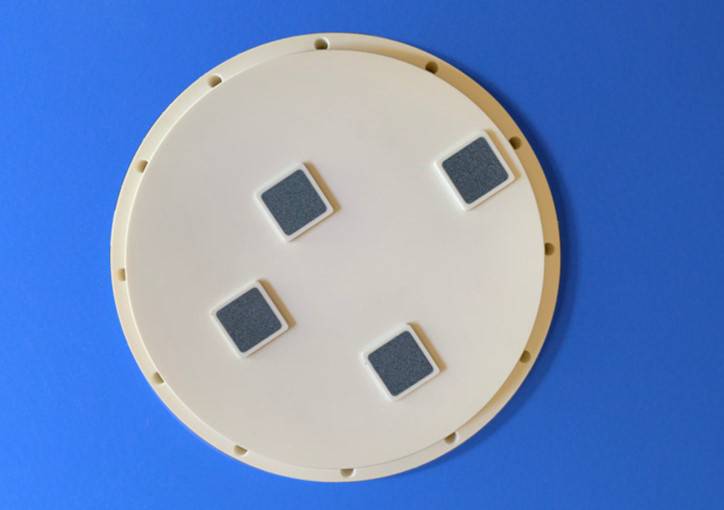
요약하면, 반도체 응용 분야에서 첨단 세라믹 소재의 다각적인 성능 요구 사항은 다음과 같이 분류할 수 있습니다:
| 성능 범주 | 특정 요구 사항 |
|---|---|
| 기계적 | 높은 경도, 내마모성 |
| 열 | 고온에서의 안정성 |
| 유전체 | 우수한 절연 특성 |
| 내화학성 | 산 및 알칼리 저항성 |
| 플라즈마 저항 | 플라즈마 부식에 대한 내성 |
이러한 엄격한 요건을 충족하는 첨단 세라믹 소재는 반도체 제조에 필수적인 복잡하고 정밀한 작업을 효과적으로 지원할 수 있습니다.
단단하고 부서지기 쉬운 재료의 정밀 가공
단단하고 부서지기 쉬운 첨단 세라믹 소재의 정밀 가공은 반도체 장비 부품에 요구되는 엄격한 요건으로 인해 매우 까다로운 과제입니다. 높은 경도와 취성이 특징인 이러한 소재는 파손을 방지하고 치수 정확도를 보장하기 위해 세심한 취급이 필요합니다. 반도체 장치의 최적 성능에 필수적인 탁월한 표면 마감과 균일성이 요구되기 때문에 가공의 복잡성은 더욱 가중됩니다.
필요한 정밀도를 달성하기 위해 제조업체는 이러한 소재의 극한의 경도를 처리할 수 있는 다이아몬드 연삭 및 래핑과 같은 고급 가공 기술을 사용합니다. 또한 CAD(컴퓨터 지원 설계) 및 CAM(컴퓨터 지원 제조) 시스템을 사용하면 반도체 부품에 필요한 복잡한 형상을 정확하게 재현할 수 있습니다. 이러한 기술은 부품의 정밀도를 향상시킬 뿐만 아니라 결함 발생 가능성을 줄여 전반적인 제품 품질을 향상시킵니다.
또한 이러한 소재의 가공에는 실시간 모니터링 및 검사 시스템을 포함한 엄격한 품질 관리 조치가 수반되는 경우가 많습니다. 이러한 조치는 사소한 결함도 심각한 운영 문제로 이어질 수 있는 반도체 애플리케이션에 필요한 높은 표준을 유지하는 데 필수적입니다. 첨단 가공 기술과 엄격한 품질 관리 프로세스의 결합은 반도체 장비용 단단하고 깨지기 쉬운 세라믹의 가공에서 정밀도의 중요한 역할을 강조합니다.
표면 처리 가공
세라믹 부품의 표면 처리는 반도체 산업에서 매우 중요한 공정으로, 특히 이러한 부품은 웨이퍼와 직접 접촉하는 경우가 많기 때문입니다. 이러한 밀접한 상호작용으로 인해 세라믹 표면의 금속 이온과 입자를 엄격하게 제어해야 합니다. 표면 처리의 주요 목표는 세라믹 부품의 무결성과 기능을 유지하여 반도체 제조 공정을 손상시킬 수 있는 오염을 방지하는 것입니다.
표면 처리 방법은 다양하지만 일반적으로 화학적 세척, 플라즈마 처리, 코팅 적용이 포함됩니다. 각 방법은 특정 오염 물질을 처리하고 세라믹 부품의 전반적인 성능을 개선하도록 설계되었습니다. 예를 들어, 화학 세척은 유기 잔류물과 금속 불순물을 제거하기 위해 사용되며, 플라즈마 처리는 표면 에너지를 향상시키고 후속 코팅을 위한 접착력을 개선합니다.
| 처리 방법 | 주요 목적 | 주요 이점 |
|---|---|---|
| 화학적 세척 | 유기 잔류물 및 금속 불순물 제거 | 깨끗한 표면을 보장하고 오염 위험을 줄입니다. |
| 플라즈마 처리 | 표면 에너지 및 접착력 향상 | 코팅 성능 향상, 내구성 증가 |
| 코팅 적용 분야 | 마모 및 부식에 대한 보호층 제공 | 부품 수명 연장, 성능 유지 |
미세한 수준의 오염도 반도체 웨이퍼에 심각한 결함을 초래할 수 있기 때문에 이러한 처리의 효과는 매우 중요합니다. 따라서 지속적인 모니터링과 엄격한 품질 관리는 표면 처리 공정에 필수적입니다. 이를 통해 세라믹 부품이 반도체 장비에 적용되는 데 필요한 높은 기준을 충족할 수 있습니다.
반도체에서 정밀 세라믹의 구체적인 적용 분야
알루미늄 산화물(Al2O3)
일반적으로 산화알루미늄(Al2O3)으로 알려진 고순도 알루미나 세라믹은 반도체 제조 장비의 필수 부품입니다. 이 세라믹은 뛰어난 기계적 및 전기적 특성으로 잘 알려져 있어 다양한 중요 애플리케이션에 이상적입니다. 특히 캐비티 부품, 절연 플랜지, 연마판, 웨이퍼 척 및 핸들링 암의 제조에 사용됩니다.
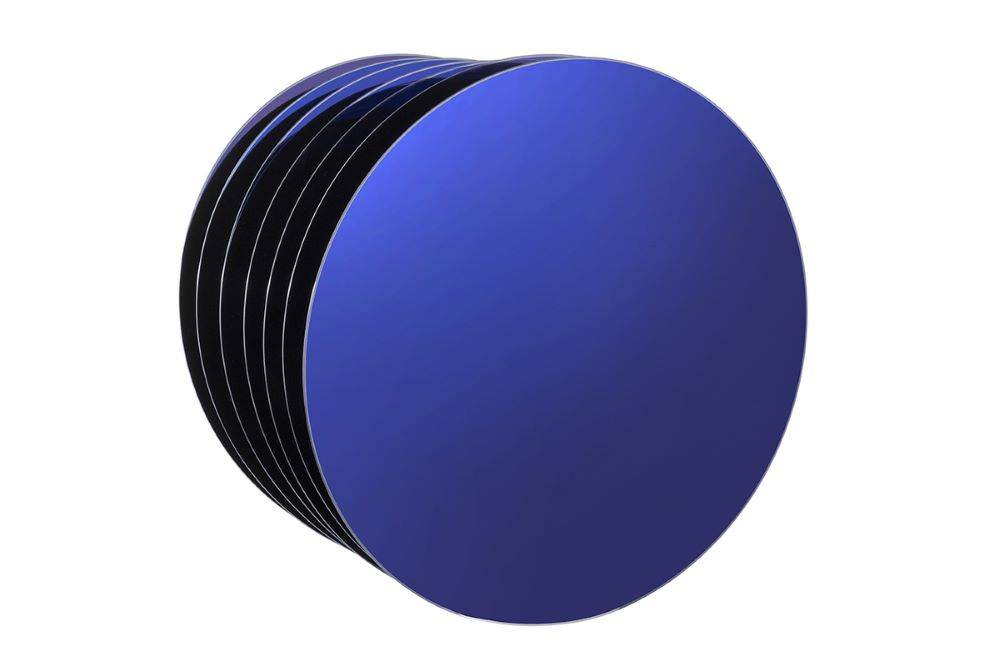
알루미나의 높은 경도와 내마모성은 이러한 부품이 반도체 생산의 엄격한 요구 사항을 견딜 수 있도록 보장합니다. 또한 낮은 침식 수준과 높은 온도 저항성은 열 안정성이 가장 중요한 환경에서 내구성을 높여줍니다. 세라믹의 내식성과 생체 불활성은 민감한 반도체 공정에서의 사용 적합성을 더욱 높여줍니다.
또한 알루미나의 고온 안정성과 열 전도성은 고온 측정 시 열전대 보호와 같은 고온 응용 분야에서 특히 유리합니다. 정밀 세라믹은 이러한 특정 요구 사항에 맞는 광범위한 고급 세라믹 튜브 및 절연체를 제공하여 반도체 제조에서 최적의 성능과 신뢰성을 보장합니다.
실리콘 카바이드(SiC)
카보룬듐으로도 알려진 실리콘 카바이드(SiC)는 1400°C의 높은 온도에서도 뛰어난 내열성과 기계적 강도로 잘 알려진 세라믹 소재입니다. 이 소재는 탄소와 실리콘 원자의 사면체로 구성되어 있으며, 강한 결합력을 가진 결정 격자를 형성하여 극한의 경도와 내구성을 제공합니다. 다른 많은 소재와 달리 탄화규소는 최대 800°C의 산, 알칼리 또는 용융 염에 의한 공격에 취약하지 않습니다. 공기 중에서 1200°C에서 보호 실리콘 산화물 코팅을 형성하여 최대 1600°C까지 무결성을 유지할 수 있습니다.
실리콘 카바이드의 고유한 특성 덕분에 다양한 반도체 제조 애플리케이션에 없어서는 안 될 소재입니다. 실리콘 카바이드의 높은 열전도율과 낮은 열팽창 및 높은 강도는 급격한 온도 변화에 노출되는 부품에 중요한 특징인 탁월한 열충격 저항성을 제공합니다. 입자 경계 불순물이 없는 실리콘 카바이드로 만든 세라믹 부품은 매우 높은 온도에서도 강도를 유지하므로 반도체 용광로의 웨이퍼 트레이 지지대 및 패들에 이상적입니다.
반도체 장비에서 탄화규소는 XY 플랫폼, 받침대, 포커싱 링, 연마판, 웨이퍼 척, 진공 흡입 컵, 핸들링 암, 퍼니스 튜브, 웨이퍼 보트, 캔틸레버 패들 등 다양한 부품에 활용됩니다. 이러한 응용 분야에서는 실리콘 카바이드의 화학적 순도, 고온에서의 화학적 공격에 대한 저항성, 극한 조건에서의 강도 유지력을 활용합니다. 또한 전기 전도성이 뛰어나 전기로용 저항 발열체와 서미스터 및 배리스터의 핵심 부품으로 사용하기에 적합합니다.
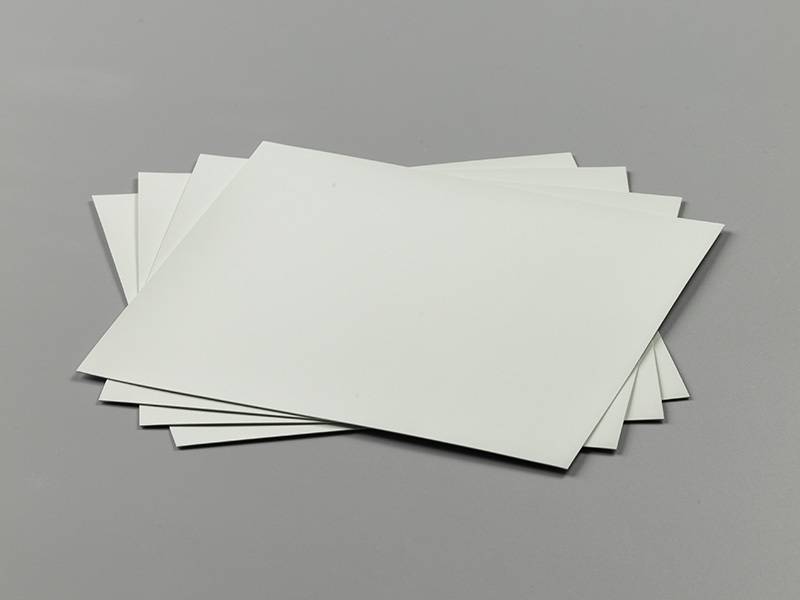
실리콘 카바이드 세라믹의 다목적성과 견고성은 정밀도와 신뢰성이 가장 중요한 반도체 산업에서 지속적으로 각광받고 있습니다.
질화 알루미늄(AIN)
고순도 질화 알루미늄(AIN) 세라믹은 특히 웨이퍼 가열 히터 및 정전기 척과 같은 반도체 응용 분야에서 중추적인 역할을 합니다. 이는 주로 반도체 장비에 사용되는 다른 많은 소재를 능가하는 뛰어난 열 전도성 때문입니다. AIN의 열전도율은 약 170~230W/m-K로 비금속 소재 중 최고의 열전도체 중 하나입니다. 이 특성은 웨이퍼 제조 시 일관된 공정 조건을 유지하는 데 중요한 효율적인 열 분배와 신속한 온도 제어를 보장합니다.
열 전도성 외에도 AIN은 뛰어난 플라즈마 저항성을 나타냅니다. 이러한 특성은 플라즈마 에칭 및 증착 공정이 사용되는 환경에서 매우 중요합니다. 성능 저하나 오염 없이 플라즈마 노출을 견디는 소재의 능력은 제조 중인 반도체 디바이스의 무결성과 순도를 유지하는 데 도움이 됩니다. 높은 열 전도성과 플라즈마 저항성이라는 두 가지 장점 덕분에 AIN은 정밀한 열 관리와 환경 안정성이 요구되는 애플리케이션에 탁월한 선택이 될 수 있습니다.
웨이퍼 가열 히터와 정전기 척에 AIN을 사용하는 것은 기계적 안정성과 낮은 열팽창 계수로 인해 더욱 강화됩니다. 이러한 특성은 열 응력 하에서 소재의 치수 무결성을 유지하여 반도체 제조 공정의 정밀도를 저하시킬 수 있는 뒤틀림이나 균열의 위험을 줄여줍니다. 결과적으로 AIN 세라믹은 기능뿐만 아니라 신뢰성도 뛰어나 반도체 생산의 전반적인 효율성과 품질에 기여합니다.
실리콘 질화물(Si3N4)
실리콘 질화물(Si3N4)은 기계적, 열적, 전기적 특성의 독보적인 조합을 자랑하는 첨단 세라믹 분야에서 최고의 소재로 각광받고 있습니다. 뛰어난 경도와 뛰어난 열충격 저항성으로 인해 성능 저하 없이 극한의 조건을 견뎌야 하는 애플리케이션에 이상적인 소재입니다. 실리콘 질화물은 대부분의 금속의 고온 성능을 능가할 뿐만 아니라 크리프 및 산화 저항성이 우수하여 고응력 환경에서도 장기적인 신뢰성을 보장합니다.
반도체 장비에서 질화규소는 특히 높은 파단 인성으로 인해 정밀 제조 공정의 까다로운 조건을 견딜 수 있다는 점에서 높은 가치를 인정받고 있습니다. 내마모성이 뛰어나 오랜 기간 동안 부품의 무결성과 정밀도를 유지하여 잦은 교체와 유지보수의 필요성을 줄여줍니다. 또한 실리콘 질화물은 내식성이 뛰어나 독한 화학 물질에 노출될 수밖에 없는 환경에서 사용하기에 적합하여 작동 수명이 더욱 연장됩니다.
| 속성 | 실리콘 질화물(Si3N4) |
|---|---|
| 경도 | 매우 단단함 |
| 열 충격 저항 | 탁월한 |
| 내마모성 | 높음 |
| 부식 저항 | 우수한 |
| 고온 성능 | 대부분의 금속을 능가하는 내식성 |
실리콘 질화물 세라믹은 반도체 장비 플랫폼, 베어링 및 기타 다양한 핵심 부품에 널리 사용됩니다. 이러한 응용 분야에서는 고온, 고부하 시나리오에서 특히 유리한 재료의 자체 윤활 특성을 활용합니다. 항공우주, 석유 및 화학 엔지니어링과 같은 산업에서는 기계적 마모, 부식 및 극한의 온도를 견디는 실리콘 질화물이 기존 금속 부품보다 우수한 선택이 될 수 있습니다.
요약하자면, 실리콘 질화물은 고유한 특성 덕분에 고성능 세라믹이 필요한 산업에서 초석 소재로서 자리매김하고 있습니다. 반도체 장비의 엄격한 요구 사항을 충족하는 능력과 다른 고응력 응용 분야에서의 다목적성은 현대 엔지니어링에서 그 중요성을 강조합니다.
정밀 세라믹 개요
정밀 세라믹의 특성 및 분류
정밀 세라믹은 고유한 특성으로 구별되며 구조용 세라믹과 기능성 세라믹의 두 가지 주요 유형으로 분류됩니다. 구조용 세라믹은 높은 경도, 탁월한 내마모성, 우수한 압축 강도 등 견고한 기계적 특성으로 잘 알려져 있습니다. 이러한 소재는 고온 및 열 충격과 같은 극한의 조건을 견딜 수 있도록 설계되어 내구성과 신뢰성이 가장 중요한 환경에서 필수적입니다.
반면 기능성 세라믹은 전기적 및 자기적 특성이 특징입니다. 이러한 세라믹은 높은 유전체 강도, 열 충격에 대한 내성 등 특정 기능을 수행하도록 설계되어 정밀한 제어 및 작동이 필요한 애플리케이션에서 매우 중요합니다. 이러한 특수한 특성이 부족한 일반 세라믹과 달리 정밀 세라믹은 첨단 산업의 까다로운 요구 사항을 충족하도록 맞춤 제작됩니다.
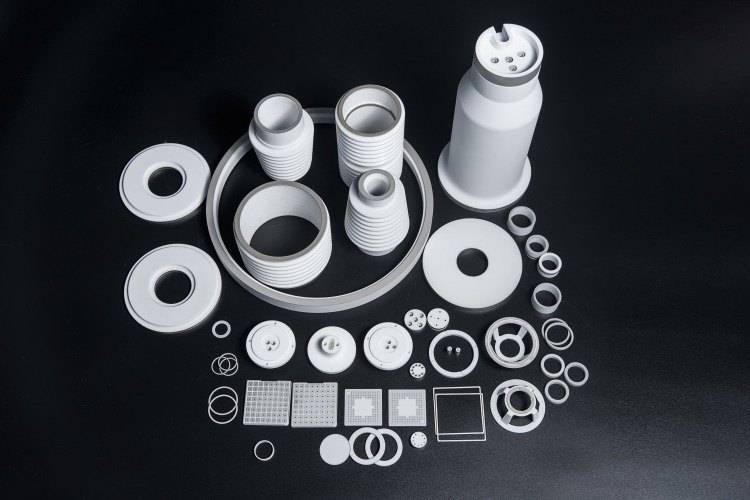
정밀 세라믹의 분류는 화학 성분에 따라 더욱 세분화할 수 있습니다. 주요 그룹은 다음과 같습니다:
- 규산염 세라믹: 주로 실리콘과 산소로 구성되며 알루미늄 및 마그네슘과 같은 다른 원소가 포함되어 있습니다. 이 세라믹은 열 안정성과 전기 절연 특성으로 잘 알려져 있습니다.
- 비산화 세라믹: 탄화규소 및 질화붕소와 같이 기본 구조에 산소가 포함되어 있지 않은 재료로 만들어집니다. 이러한 세라믹은 종종 높은 열전도율과 기계적 강도를 나타냅니다.
- 산화물 세라믹: 산화알루미늄(알루미나) 및 산화지르코늄을 포함한 다양한 금속의 산화물로 구성됩니다. 이러한 소재는 우수한 유전체 특성과 고온 안정성으로 높은 평가를 받고 있습니다.
| 세라믹 유형 | 주요 구성 | 주요 특성 |
|---|---|---|
| 규산염 세라믹 | SiO₂, Al₂O₃, MgO | 열 안정성, 전기 절연 |
| 비산화 세라믹 | SiC, BN | 높은 열전도율, 기계적 강도 |
| 산화물 세라믹 | Al₂O₃, ZrO₂ | 우수한 유전체 특성, 고온 안정성 |
이 세부 분류는 정밀 세라믹의 다양한 응용 분야와 기능을 강조하며, 반도체 장비의 복잡하고 까다로운 요구 사항에 완벽하게 부합합니다.
정밀 세라믹의 제조 공정
정밀 세라믹의 제조 공정은 반도체 애플리케이션을 위한 고품질 부품 생산을 보장하기 위해 세심하게 설계된 복잡하고 다단계적인 노력의 산물입니다. 이 프로세스는 혼합 로 시작되며, 원하는 특성을 얻기 위해 세라믹 파우더와 첨가제를 정밀하게 혼합합니다. 그 후 혼합물은 다음과 같은 과정을 거칩니다. 과립화 분말의 유동성과 압축성을 향상시켜 후속 작업 시 취급이 용이하도록 하는 단계입니다.
다음으로, 과립화된 분말은 다음과 같은 과정을 거칩니다. 빌렛 성형 을 거쳐 최종 제품의 거친 모양으로 성형됩니다. 이는 일반적으로 프레스 또는 사출 성형과 같은 기술을 통해 분말을 녹색 몸체로 압축하여 이루어집니다. 그런 다음 녹색 바디는 빌렛 가공 을 거쳐 반도체 장비에 필요한 정확한 사양을 충족하도록 모양을 다듬고 다듬는 과정을 거칩니다.
이 공정에서 가장 중요한 단계는 소결 으로, 녹색 바디를 통제된 환경에서 고온으로 가열합니다. 소결 과정에서 수분 및 유기 첨가제와 같은 휘발성 성분이 제거되고 세라믹 입자가 서로 결합하여 조밀하고 견고한 구조가 형성됩니다. 이 과정에서 발생하는 수축은 수축 계수를 사용하여 세심하게 관리되므로 부품의 최종 치수를 정확하게 계산할 수 있습니다.
소결이 완료되면 세라믹 부품은 마무리 반도체 애플리케이션에 필요한 엄격한 허용 오차를 충족하도록 표면과 치수를 다듬는 일련의 가공 작업을 거칩니다. 연삭, 밀링, 드릴링 및 연마를 포함하는 이러한 작업은 재료의 경도와 취성으로 인해 다이아몬드 툴링 또는 초음파를 사용하여 수행되는 경우가 많습니다. 공정의 마지막 단계는 품질 테스트 로, 부품의 결함 및 치수 정확도를 검사한 다음 표면 처리 를 통해 반도체 제조의 혹독한 환경에서 부품의 성능과 내구성을 향상시킵니다.
관련 제품
- 엔지니어링 첨단 세라믹용 정밀 가공 이트리아 안정화 지르코니아 세라믹 플레이트
- 첨단 응용 분야를 위한 전도성 질화붕소 BN 세라믹 복합재
- 고급 엔지니어링 파인 세라믹 질화붕소(BN) 세라믹 부품
- 정밀 응용 분야를 위한 엔지니어링 고급 알루미나(Al₂O₃) 세라믹 위치 지정 핀 스트레이트 베벨
- 엔지니어링 첨단 파인 세라믹용 정밀 가공 이트륨 안정화 지르코니아 세라믹 로드

